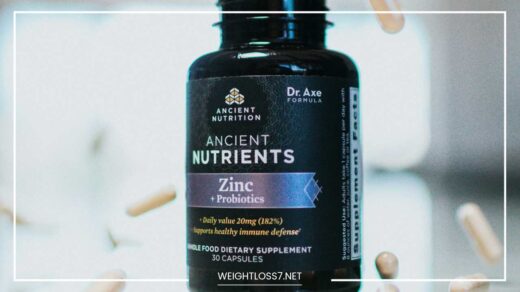Sunshine: Nature’s Pharmacy

Sunshine
Sunshine: Nature’s Pharmacy – A Deep Dive into Its Health Benefits
Sunshine. It evokes images of warm beaches, lazy afternoons, and a feeling of pure contentment. But beyond the aesthetic pleasure it brings, sunshine is a vital component of a healthy lifestyle.
It’s nature’s pharmacy, offering a potent blend of benefits that range from strengthening our bones to boosting our mood.
Let’s delve deeper into this powerful force and explore the science behind its remarkable impact on our well-being.
The Vitamin D Dynamo: Building Strong Bones and Beyond
Sunlight plays a starring role in our body’s production of vitamin D, often dubbed the “sunshine vitamin.” This essential nutrient acts like a conductor in an orchestra, directing calcium towards bone formation and ensuring their strength and density.
Deficiency in vitamin D can lead to a condition called rickets in children, characterized by soft and weak bones. In adults, it can contribute to osteoporosis, a condition that makes bones more susceptible to fractures.
The amount of vitamin D our bodies synthesize depends on several factors, including:
- Sun exposure: The time of day, season, and location all influence how much UV light reaches our skin. Midday sun exposure generally provides the most efficient vitamin D production.
- Skin pigmentation: Melanin, the pigment that gives skin its color, also affects vitamin D synthesis. Individuals with darker skin tones may require slightly longer sun exposure to produce the same amount of vitamin D compared to those with lighter skin tones.
- Clothing coverage: Sunscreen and clothing that covers a large portion of the skin can limit vitamin D production.
While aiming for 15-20 minutes of midday sun exposure on bare arms and legs is a good starting point for most people, it’s crucial to prioritize sun safety.
Overexposure to UV rays can lead to sunburn and increase the risk of skin cancer. Striking the right balance between sun exposure and protection is key.
For those living in regions with limited sunlight or who have difficulty getting enough sun exposure, vitamin D supplements can be a valuable alternative.
Consulting with a healthcare professional can help determine the appropriate dosage based on individual needs and vitamin D levels.
Beyond Bones: Sunshine’s Symphony of Benefits
The positive effects of sunshine extend far beyond bone health and vitamin D production. It plays a significant role in regulating various bodily functions, influencing our physical and mental well-being in surprising ways.
- Mood Maestro: Sunlight exposure is like a natural antidepressant. It triggers the production of serotonin, a neurotransmitter that plays a crucial role in mood regulation. When sunlight hits our skin, serotonin levels rise, leading to feelings of happiness, calmness, and focus.
- Seasonal Affective Disorder (SAD) Buster: In contrast, a lack of sunlight can contribute to SAD, a type of depression that typically occurs during winter months when daylight hours are shorter. Symptoms can include fatigue, low mood, and social withdrawal. Light therapy, which mimics natural sunlight, is a common treatment for SAD, highlighting the powerful connection between sunshine and emotional well-being.
- Immune System Shield: Studies suggest that sunlight exposure may increase the production of white blood cells, which are our body’s frontline defense against infection and illness.
- Blood Pressure Regulator: Sunlight exposure has been linked to improved blood vessel function, which can help regulate blood pressure. This can be particularly beneficial for individuals at risk of cardiovascular disease.
- Sleep Symphony Conductor: Sunlight helps regulate our circadian rhythm, the internal clock that governs our sleep-wake cycle. Regular exposure to sunlight, particularly in the morning, helps synchronize this rhythm, promoting better sleep quality and overall sleep hygiene.
- Inflammation Fighter: Sunlight exposure may help reduce inflammation in the body, a chronic condition associated with many diseases like arthritis, heart disease, and even some cancers.
- Wound Healing Helper: Sunlight exposure has been shown to promote wound healing by increasing the production of collagen, a protein that helps repair tissues.
Unveiling the Science: How Sunlight Works Its Magic
The magic of sunshine lies in its ultraviolet (UV) rays, specifically UVA and UVB rays. Here’s a breakdown of how they influence our health:
- Vitamin D Production: UVB rays trigger the production of vitamin D in the skin. This vital nutrient is then transported to the liver and kidneys for conversion into its active form, ready to be utilized by the body.
- Mood Regulation: Sunlight exposure also stimulates the production of serotonin through a complex pathway involving the eyes, hypothalamus, and pituitary gland. Serotonin helps regulate mood, sleep, and appetite.
- Immune System Boost: UV radiation may suppress the activity of certain immune system cells, while also stimulating the production of others. This complex interplay helps maintain a balanced immune response.
- Blood Pressure Regulation: Sunlight exposure may increase the production of nitric oxide, a molecule that helps relax blood vessels and improve blood flow, leading to lower blood pressure.
- Sleep Regulation: Sunlight exposure, particularly in the morning, helps suppress the production of melatonin, a hormone associated with sleepiness. This helps to synchronize our circadian rhythm with the light-dark cycle, promoting better sleep at night.
- Inflammation Reduction: The exact mechanisms are still being explored, but sunlight exposure may reduce inflammation by suppressing the activity of certain inflammatory pathways and stimulating the production of anti-inflammatory molecules.
- Wound Healing: Sunlight exposure may promote wound healing by increasing the production of collagen, a protein that plays a crucial role in tissue repair. Additionally, UV radiation may have a mild antibacterial effect, helping to prevent infection in wounds.
Sun Safety: A Balancing Act
While sunshine offers a wealth of health benefits, it’s important to be mindful of sun safety. Overexposure to UV rays can have detrimental effects, including:
- Sunburn: This is the most common consequence of overexposure, causing redness, pain, and inflammation of the skin. Repeated sunburns can increase the risk of skin cancer.
- Premature Skin Aging: UV rays break down collagen and elastin, the fibers that give skin its youthful appearance. This can lead to wrinkles, fine lines, and loss of skin elasticity.
- Eye Damage: Excessive exposure to UV radiation can damage the eyes, potentially leading to cataracts and macular degeneration.
- Increased Risk of Skin Cancer: UV radiation is a major risk factor for skin cancer, the most common type of cancer in the United States.
Here are some essential sun safety tips to ensure you’re reaping the benefits of sunshine without compromising your health:
- Seek shade during peak sun hours: The sun’s rays are strongest between 10 am and 4 pm. Limit direct sun exposure during this time and find shade whenever possible.
- Embrace sun-protective clothing: Cover up with long sleeves, pants, and a wide-brimmed hat when spending extended time outdoors. Look for clothing with a tight weave and a UPF (Ultraviolet Protection Factor) rating of 50+.
- Sunscreen is your friend: Apply sunscreen with SPF 30 or higher liberally and reapply every two hours, or more often if swimming or sweating. Choose a broad-spectrum sunscreen that protects against both UVA and UVB rays.
- Sunglasses are essential: Protect your eyes from UV radiation by wearing sunglasses that block out 99% of UVA and UVB rays.
- Know your skin: Be aware of any changes in your moles or freckles, and consult a doctor if you notice anything suspicious. Perform regular skin self-exams to detect any potential skin cancers early.
Making Sunshine a Part of Your Daily Life
Incorporating sun exposure into your daily routine in a safe and responsible way can significantly enhance your overall well-being. Here are some practical tips to get you started:
- Plan outdoor activities for the morning or late afternoon: When the sun’s rays are less intense, enjoy activities like walking, hiking, gardening, or simply relaxing on a patio.
- Take your workout outdoors: Go for a jog, do some yoga in the park, or participate in a group fitness class that takes place outside.
- Open your curtains and let the natural light stream in: Allow sunlight to fill your home during the day. Natural light not only brightens your space but can also have positive effects on mood and energy levels.
- Dine outdoors when possible: Enjoy breakfast or lunch on a sunny patio or balcony. This is a simple way to incorporate some extra sun exposure into your day.
- Adjust your commute: If feasible, consider walking or biking to work instead of driving. This will not only give you some extra sun exposure but also provide some exercise benefits.
Remember, even small changes can make a big difference. By making sunshine a regular part of your life, you’ll be well on your way to a healthier, happier you.
Sunshine – A Gift from Nature
Sunshine is a gift from nature, offering a multitude of benefits for our physical and mental well-being. By understanding the science behind its magic and practicing responsible sun safety, we can harness the power of sunshine to optimize our health and live a more vibrant life.
So, step outside, soak up some rays (safely, of course!), and feel the sunshine work its wonders on your body and mind.
Sunshine and Modern Challenges: Considerations and Alternatives
While sunshine offers a wealth of benefits, our modern lifestyles sometimes make it challenging to get enough safe sun exposure. Here’s a look at some contemporary hurdles and alternative strategies to consider:
Challenges:
- Limited Time Outdoors: Many people work in office environments with limited access to natural light. Additionally, our leisure activities often revolve around screens, further reducing time spent outdoors.
- Urban Environments: Tall buildings and air pollution can significantly reduce the amount of UV light reaching the ground in urban areas.
- Seasonal Variations: In regions with long winters or limited daylight hours, getting sufficient sun exposure can be difficult.
- Skin Concerns: Individuals with certain skin conditions or who are prone to sunburn may need to be extra cautious with sun exposure.
Alternative Strategies:
- Embrace the Early Bird Lifestyle: The sun’s rays are strongest in the midday hours, but also harsher. Consider getting some sun exposure in the early morning hours when the UV index is lower. Even a short walk or breakfast on a balcony can be beneficial.
- Seek Light During Breaks: If you work in an office, take advantage of your breaks to step outside for a few minutes and soak up some sunlight.
- Weekend Sun Warriors: Plan outdoor activities for weekends, when you have more time to spend in nature. Go for a hike, bike ride, or simply relax in your backyard while enjoying the sunshine.
- Light Therapy: For individuals with limited sun exposure or those experiencing symptoms of SAD, light therapy can be a helpful alternative. Light therapy boxes mimic natural sunlight and can help regulate mood and sleep patterns.
- Dietary Sources of Vitamin D: Consider incorporating foods rich in vitamin D into your diet, such as fatty fish (salmon, sardines, mackerel), egg yolks, and fortified foods like milk and cereals. However, dietary sources alone may not be enough to meet your vitamin D needs, so discuss supplementation with your healthcare professional.
Optimizing Sun Exposure for Different Age Groups
The impact of sunshine and the need for sun safety can vary depending on age. Here’s a brief look at considerations for different age groups:
Children: Children’s skin is more sensitive to UV radiation than adults. Limit their direct sun exposure, especially during peak sun hours. Opt for shade, protective clothing, and sunscreen with SPF 30 or higher for them. However, some supervised sun exposure can still be beneficial for vitamin D production in children.
Adults: Adults generally have more tolerance for sun exposure, but sun safety remains crucial. Aim for moderate sun exposure during safe times and prioritize sun protection measures.
Older Adults: As we age, our skin becomes thinner and more susceptible to sun damage. Older adults may also have a decreased ability to synthesize vitamin D from sunlight. Be mindful of sun exposure and consider discussing vitamin D supplementation with your doctor.
Final Word: A Balanced Approach to Sunshine
Sunshine is a powerful force that can significantly enhance our health and well-being. By understanding its benefits, potential risks, and adopting safe practices, we can harness the power of sunshine responsibly.
Whether it’s through strategic outdoor time, alternative strategies like light therapy, or dietary adjustments, we can ensure we’re getting the sunshine we need to thrive.
Remember, a balanced approach is key. Embrace the sunshine, but do so safely, and you’ll be on your way to a healthier, happier you.

















